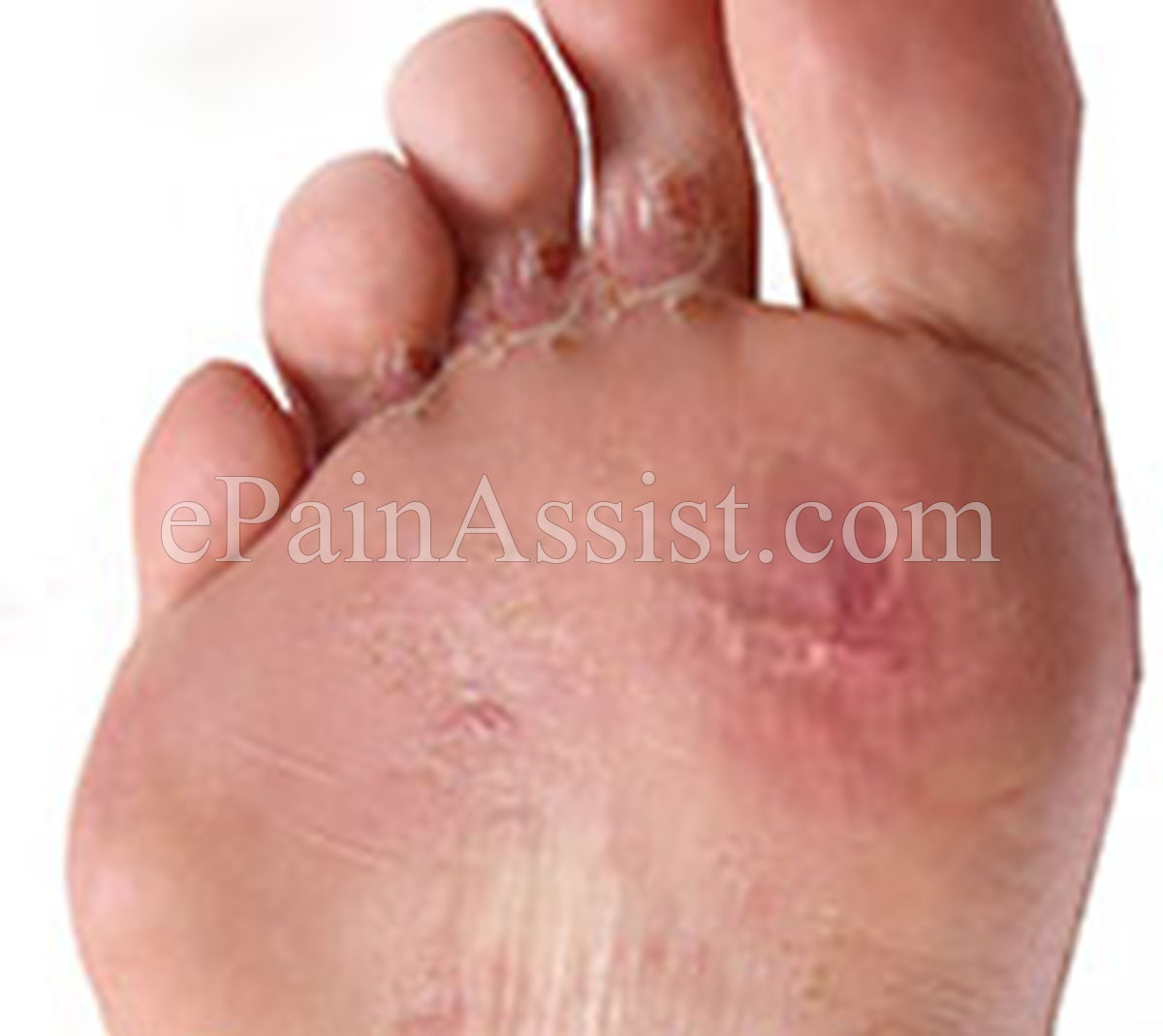What is Athlete’s Foot?
Athlete’s foot is an infection of the skin affecting the soles of the feet and the webs of the toes. Symptoms are itching, burning, pain, and scaling of the feet. It is commonly caused by a fungus and is termed as tinea pedis. It is thought to commonly affect athletes; however, anyone can develop this condition.
Symptoms of Athlete’s Foot or Tinea Pedis
- Sometimes patients don’t have any symptoms at all.
- If the Athlete’ foot is very mild, then it may appear as dry skin.
- Itching or burning is present.
- There may also be peeling or flaking of skin.
- In severe cases, there may be cracking and bleeding from the skin.
- Rarely there may be blistering of the skin.
Causes of Athlete’s Foot or Tinea Pedis
It is commonly caused by a fungus, Trichophyton. This fungus flourishes in warm and moist surroundings. Athlete’s foot frequently affects the soles, toes and the skin in between the toes. This condition is contagious. It can be passed by using same towels, socks or walking barefoot in the changing room. It is thought to commonly affect the athletes, but it can affect anyone. The reason it affects the athletes is because they wear closed footwear and their feet become hot and sweaty while training. Another cause is sharing the same changing areas in pools and health clubs. Some individuals are more prone to developing this condition. Other causes are irritant or contact dermatitis, allergic rashes, psoriasis, yeast infections and bacterial infections.

Treatment of Athlete’s Foot or Tinea Pedis
- Athlete’s foot treatment is done in two steps. First of all, the affected area should be kept clean and dry to prevent further thriving of the fungus. Proper and breathable shoes made of natural materials should be worn. Socks made of absorbent, cotton material should be used.
- The second step is treating the infection. For this, anti-fungal creams, powders or washes are used. Patient should use them daily until the infection and symptoms subside completely. If the athlete’s foot is left untreated, it spreads to other body parts and to other people.
- For more severe cases which do not benefit from topical antifungal treatment, a course of oral anti-fungal medications is given.
Prevention of Athlete’s Foot or Tinea Pedis
- Comfortable, breathable shoes made of leather or open shoes should be worn.
- The feet should be washed regularly and dried thoroughly.
- Powders such as talcum powder or antifungal powder should be used on the feet after drying to absorb the excess moisture and sweat.
- Always wear flip-flops or sandals in the changing rooms of health clubs.
- Cotton socks should be worn and changed regularly.
Also Read:
- Fungal Nail Infection: Causes, Treatment, Home Remedies, Symptoms, Prevention
- Onychomycosis: Causes, Symptoms, Treatment, Home Remedies, Prevention, Diagnosis, Signs
- Scalp Conditions that Cause Hair Loss & its Treatment
- Jock Itch: Causes, Symptoms, Treatment, Home Remedies|Is Jock Itch Contagious and How long Does Jock Itch Last?
- Tinea Barbae: Causes, Symptoms, Treatment, Prevention
- What is Tinea Unguium, Know its Causes, Symptoms, Treatment, Prognosis, Pathophysiology, Diagnosis
- Is Dermatophytosis Contagious?|Causes, Symptoms, Treatment, of Dermatophytosis
